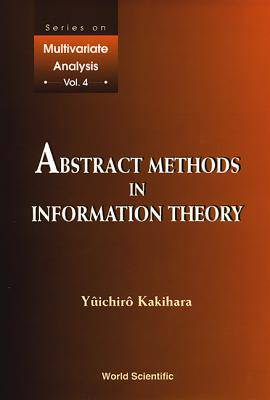
- Afhalen na 1 uur in een winkel met voorraad
- Gratis thuislevering in België vanaf € 30
- Ruim aanbod met 7 miljoen producten
- Afhalen na 1 uur in een winkel met voorraad
- Gratis thuislevering in België vanaf € 30
- Ruim aanbod met 7 miljoen producten
Zoeken
Omschrijving
Information Theory is studied from the following view points: (1) the theory of entropy as amount of information; (2) the mathematical structure of information sources (probability measures); and (3) the theory of information channels. Shannon entropy and Kolmogorov-Sinai entropy are defined and their basic properties are examined, where the latter entropy is extended to be a linear functional on a certain set of measures. Ergodic and mixing properties of stationary sources are studied as well as AMS (asymptotically mean stationary) sources. The main purpose of this book is to present information channels in the environment of real and functional analysis as well as probability theory. Ergodic channels are characterized in various manners. Mixing and AMS channels are also considered in detail with some illustrations. A few other aspects of information channels including measurability, approximation and noncommutative extensions, are also discussed.
Specificaties
Betrokkenen
- Auteur(s):
- Uitgeverij:
Inhoud
- Aantal bladzijden:
- 264
- Taal:
- Engels
- Reeks:
- Reeksnummer:
- nr. 4
Eigenschappen
- Productcode (EAN):
- 9789810237110
- Verschijningsdatum:
- 18/10/1999
- Uitvoering:
- Hardcover
- Formaat:
- Genaaid
- Afmetingen:
- 162 mm x 221 mm
- Gewicht:
- 498 g

Alleen bij Standaard Boekhandel
+ 145 punten op je klantenkaart van Standaard Boekhandel
Beoordelingen
We publiceren alleen reviews die voldoen aan de voorwaarden voor reviews. Bekijk onze voorwaarden voor reviews.











